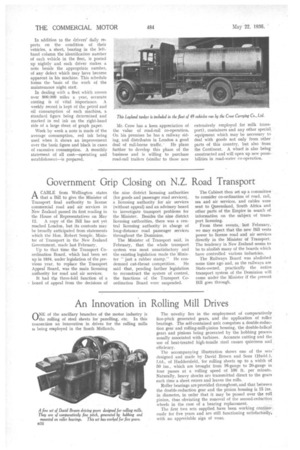An Innovation in Rolling Mill Drives O NE of the ancillary
Page 36

If you've noticed an error in this article please click here to report it so we can fix it.
branches of the motor industry is the rolling of steel sheets for panelling, etc. In this connection an innovation in drives for the rolling mills Is being employed in the South Midlands.
The novelty lies in the employment of comparatively fine-pitch generated gears, and the application of roller bearings. The self-contained unit comprises a double-reduction gear and rolling-mill-pinion housing, the double-helical gears and pinions being generated by the hobbing process usually associated with turbines. Accurate cutting and the use of heat-treated high-tensile steel ensure quietness and efficiency.
The accompanying illustration shows one of the sets' designed and made by David Brown and Sons (Hudd.), Ltd., of Huddersfield, for rolling sheets up to a width of 50 ins., which are brought from 1-gauge to 20-gauge in four passes at a rolling speed of 100 ft. per minute. Naturally, heavy shocks are transmitted direct to the gears each time a sheet enters and leaves the rolls.
Roller bearings are provided throughout, and that between the double-reduction gear and the pinion housing is 15 ins. in diameter, in order that it may be passed over the roll pinion, thus obviating the removal of the second-reduction wheels in the case of a bearing replacement.
The first two sets supplied have been working corititm-, ously for five years and are still functioning satisfactorily, with no appreciable sign of wear.




















































































